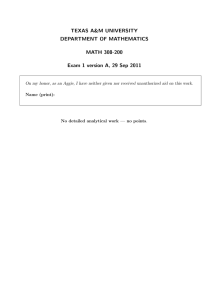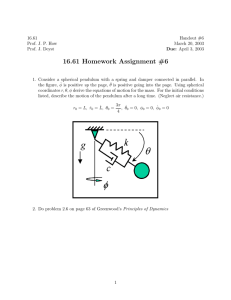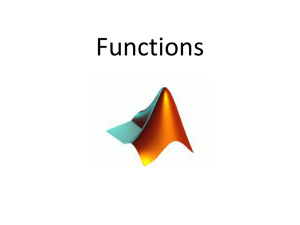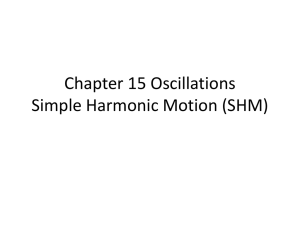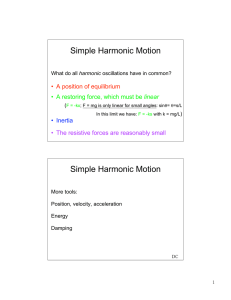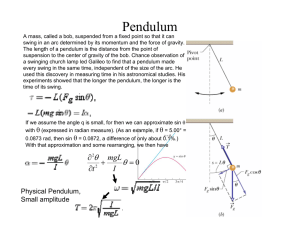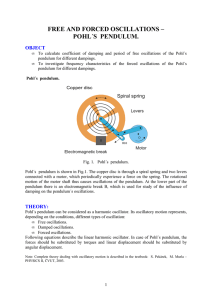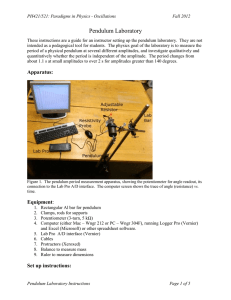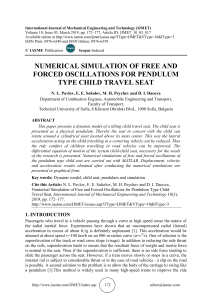TAP 307- 2 Forced oscillations Apparatus What to do
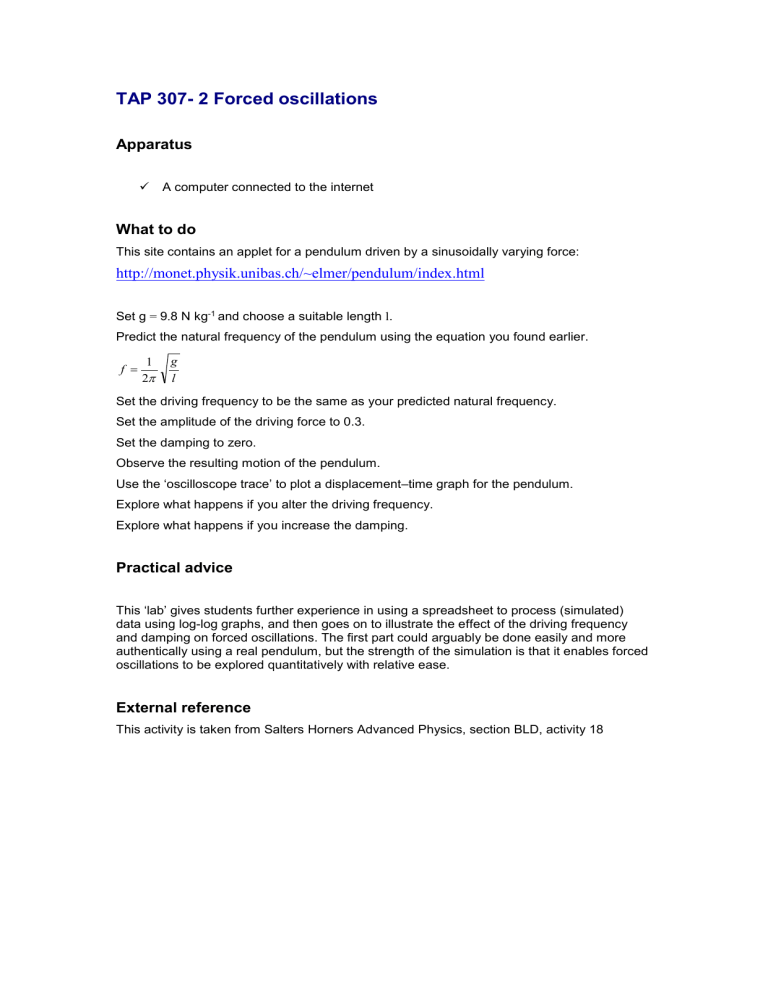
TAP 307- 2 Forced oscillations
Apparatus
A computer connected to the internet
What to do
This site contains an applet for a pendulum driven by a sinusoidally varying force: http://monet.physik.unibas.ch/~elmer/pendulum/index.html
Set g = 9 .
8 N kg -1 and choose a suitable length l .
Predict the natural frequency of the pendulum using the equation you found earlier. f
1
2
g l
Set the driving frequency to be the same as your predicted natural frequency.
Set the amplitude of the driving force to 0.3.
Set the damping to zero.
Observe the resulting motion of the pendulum.
Use the ‘oscilloscope trace’ to plot a displacement–time graph for the pendulum.
Explore what happens if you alter the driving frequency.
Explore what happens if you increase the damping.
Practical advice
This ‘lab’ gives students further experience in using a spreadsheet to process (simulated) data using log-log graphs, and then goes on to illustrate the effect of the driving frequency and damping on forced oscillations. The first part could arguably be done easily and more authentically using a real pendulum, but the strength of the simulation is that it enables forced oscillations to be explored quantitatively with relative ease.
External reference
This activity is taken from Salters Horners Advanced Physics, section BLD, activity 18
